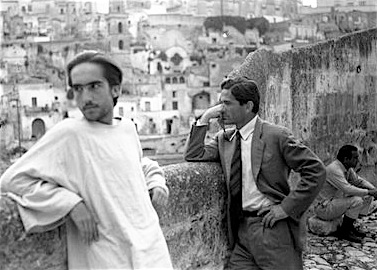Who will bow and bend like a willow
Who will turn and twist and reel
In the gale of simple freedom …– Shaker spiritual
John Ciardi said that the poet is known by the valor of his refusals. So too the saint. But the austerity of self-limitation is not what we might have expected from the Wooster Group, the edgy New York City troupe long known for its Dionysian blends of experimental theater and multimedia technologies. Their latest production, however, not only reincarnates the music of the Shakers, it does so with a minimalist restraint worthy of that nearly extinct American sect.
Early Shaker Spirituals: A Record Album Interpretation presents all 20 songs from side A of a 1976 LP recorded at the dwindling Shaker community in Sabbathday Lake, Maine. After the liner notes for each song are read aloud, four women in plain 19th century dress sing along with the actual spinning record as it is transmitted to them through wireless receivers. The voice of Suzzy Roche is especially haunting, lean and lonesome and saturated with pastness like a faded tintype. While we listen to these contemporary reproductions of long departed voices, we sometimes hear the faint traces of the original recorded sound leaking into the room from the women’s earpieces. As the New York Times has written: “The aural effect is subtle and eerie, suggesting a kind of phantasmal possession of the present by the past or, if you prefer, the eternal.”[i]
Sitting quietly, passive and still, replicating out loud what they are hearing in their ear, the singers seem to be channeling something not of their own making, a transcendent voice entering the present world by first passing through their own souls and bodies. It feels like the spiritual ventriloquism of biblical prophecy. What shall I sing? Sing this. How fitting for a repertoire which the Shakers often attributed to the gifts of unseen spirits or divine inspiration.
The contrast of the singers’ personal inexpressiveness with such passionate, ecstatic and sometimes eschatological song texts (“with leaping and with dancing / we’ll hail the jubilee”) only strengthens the sense of otherness. What they sing does not come from them, but through them. It is not a spontaneous construct whipped up by emotional display. Such unassertive transparency achieves a strange oracular force. We hear a message from beyond.
Even when the singers rise from their chairs to approximate the original Shaker dances, it is not an exaltation of the self, but a yielding to the higher rhythms of divine choreography. As they reel, turn and twist to “shake out all the starch and stiffening,” they do not express. They surrender.
When I saw this compelling performance the other night in Los Angeles’ Redcat Theater, I was transported – whether to the past, or to the eternal, who can say? But I came away touched by a larger world than my ordinary domain. Voices distant in time had spoken to me. And is this not analogous to the eucharistic liturgy? We listen to ancient voices as if they were here and now, and speak their words from our own lips. Transparent presiders at the altar reproduce actions first performed in Jerusalem 2000 years ago. If we manage to keep our ego out of the way in the liturgy, the eternal Word, like that 1976 Shaker recording, may be heard and received in the fresh particularity of the now.
Some of the Wooster Group might take issue with my theological interpretation. Frances McDormand, the ensemble’s best-known actress, has resisted the religious dimensions of the Shaker tradition, preferring to stress the communal qualities of their musical environment. “It’s not religiously based,” she said in an interview. “It’s more poetic. There are parables to it, but it’s not about Jesus so it’s a little bit easier to take.”[ii]
Such indifference to Christian theology and practice is the common currency of secular modernity, the default position posing a perpetual challenge to those who would speak of faith. Many people think of Jesus and Christianity as something over and done, at least for them.
And yet, here is a cutting edge theater troupe performing religious songs without irony or ridicule, in a creative simulacrum of the otherness of the music’s reputedly transcendent source. While I won’t presume to baptize the Wooster Group, or attribute overt belief where it is explicitly denied, I still wonder whether there might yet be something larger at work in the world than any of us are able either to understand or admit. Whatever the Wooster Group actually thinks about what they are doing, and whatever ideas I might have about it, the “simple gifts” of love and delight go on being given and being received. Whether the mechanism of that exchange can be adequately described or named is perhaps the least important part of the whole thing. Experience trumps the language we put to it. In the end, you don’t need to possess the perfect map before you can dwell in “the valley of love and delight.” You’re already there. Its song is already whispering in your ear.
[i] Ben Brantley, The New York Times, May 29, 2014
[ii] James Kim interview with Frances McDormand, KPPC radio, Jan. 21, 2015



